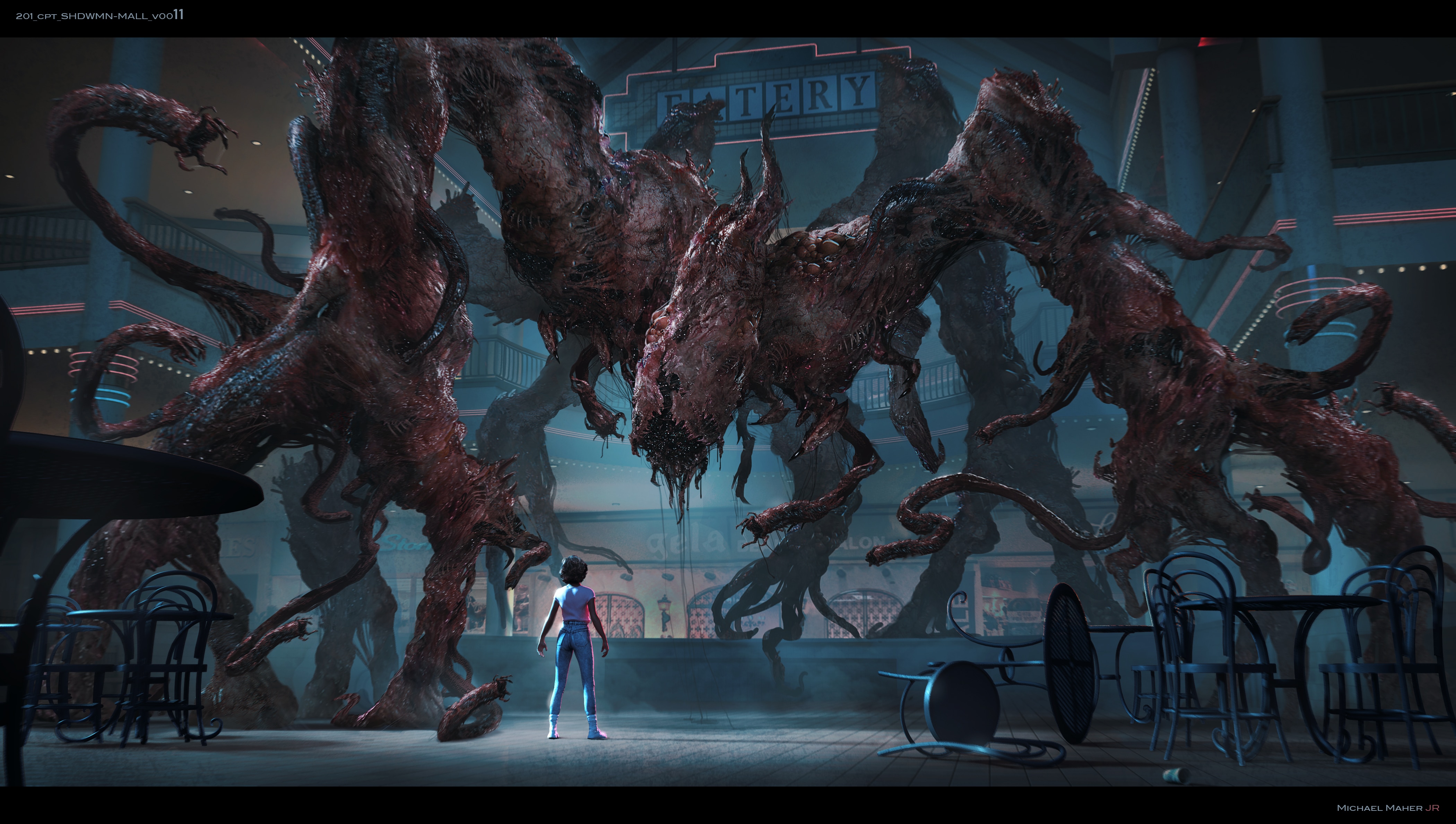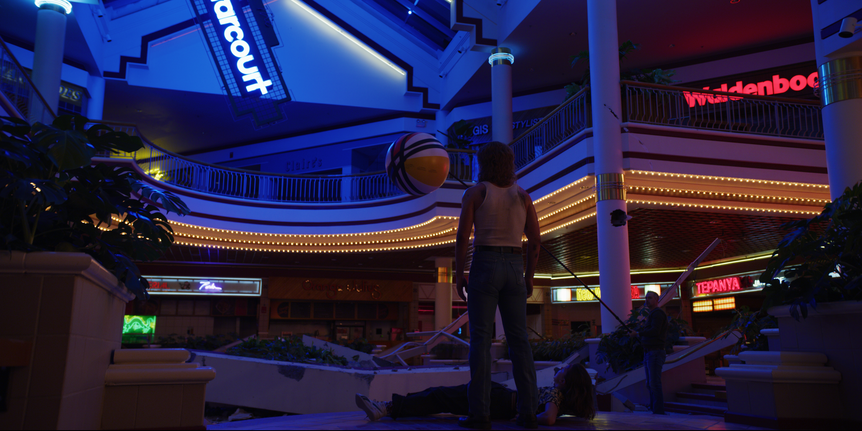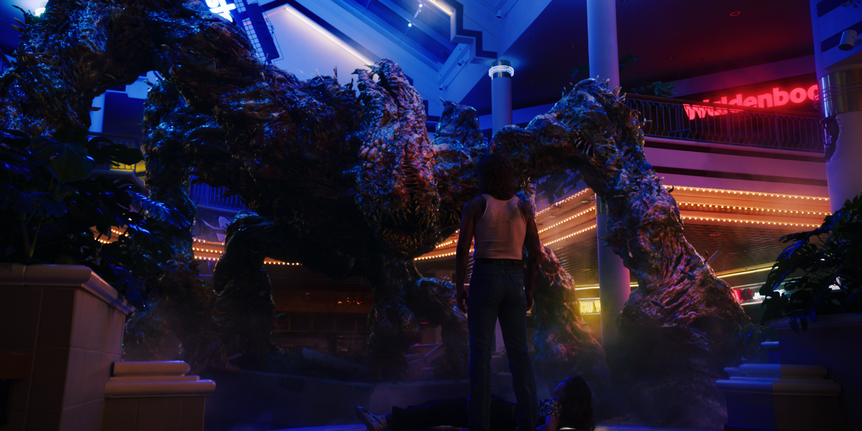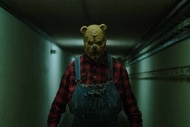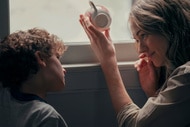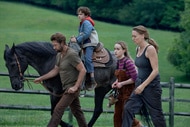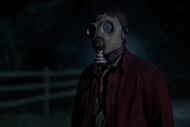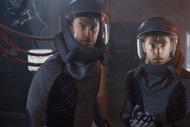Create a free profile to get unlimited access to exclusive videos, sweepstakes, and more!
Emmy Contenders: How Stranger Things made monsters using a 'primordial scream' and shiny balls
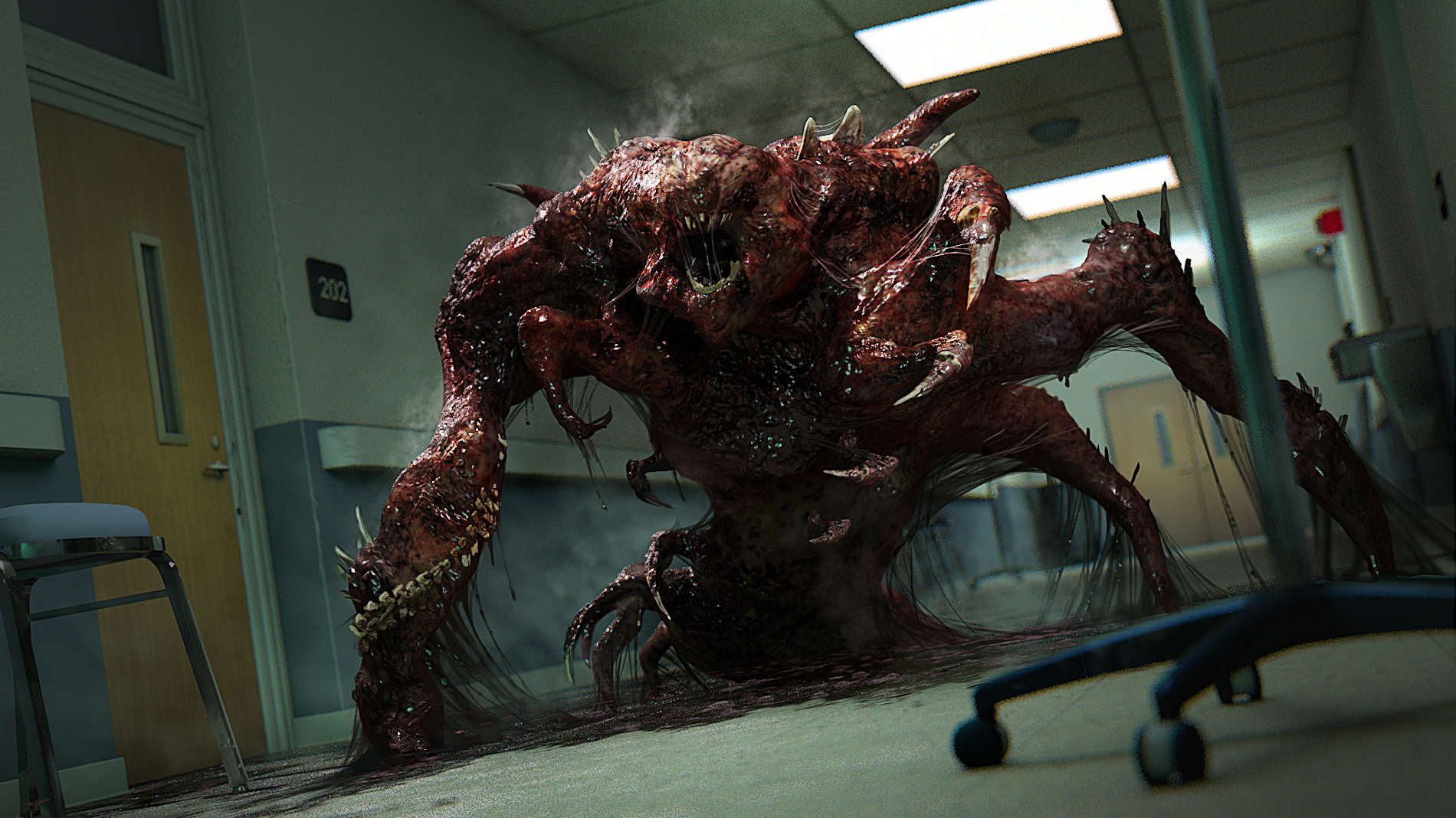
Welcome to Emmy Contenders 2020. This month, SYFY WIRE is speaking to some of the actors and artisans whose work earned them Emmy nominations this year. Today we speak with Paul Graff, the Emmy-nominated VFX supervisor for Netflix's Stranger Things.
Having now worked on Stranger Things for two seasons, VFX supervisor Paul Graff thinks he should start a company called Improv Visual Effects — a name that would suggest how little time he often gets to prepare for even the most complicated scenes.
But, he says, “what’s beautiful about that is that it makes the creative process like an avalanche. It gives it an incredible amount of momentum and force, and it keeps evolving during the shoot.” A perfect example of that is the evolution of one of the most remarkable effects in Season 3, the Mind Flayer monster, which Graff discussed with SYFY WIRE in the interview below.
Part of your approach was pitching a lot of ideas that didn’t necessarily make it into the show per se, but helped the Duffer brothers figure out their approach to the monster, right? I’m thinking specifically about how you developed concept art animation for a possible finale.
The whole thing started with Matt Duffer. He took me aside, and he said, “I just watched [Peter Jackson's 2005] King Kong this last weekend, and now I have a much better idea of VFX, since we’ve been working together.” And I was like, “I don’t feel like I have shot King Kong yet.” King Kong was pre-visualization and storyboards to the nth degree. They had all that CG in place before they did a lot of the live-action shooting. That is absolutely not Stranger Things. We did have a nightmarish spider monster, a Lovecraftian stew that we built for Season 2, but the one thing it didn’t have was weight. You can’t do a Jurassic Park shot with the glass of water bouncing as the thing is coming closer.
So this season, what we wanted to do was make it really heavy. They wanted it to be fleshy, gory, and dripping. It was infused by The Thing, the John Carpenter version, because it was like, “Let’s make a Carpenter movie to some degree.” I knew how big this was going to be because we were talking about Jurassic Park and King Kong, but I had never done anything like that. How do I prep for this? All the pre-mapping and pre-viz to calculate it is out of the question because it hasn’t even been written yet.
So I had this monster, which was graphically designed by Michael Mayer. It had tentacles, which looked pretty much like they ended up looking. It was 22 feet in shoulder height. It could stomp. We knew it was going to be in the grand finale. We had all these vendors who wanted to do the monster — everyone wanted to do the monster — but we gave Rodeo a CG kit of the monster, with all its tentacles out, and they needed to put bones into it and start moving it. And I told some other companies they could play with it, too, so we had three companies playing with things, and quickly we learned that the monster could not walk with its tentacles out. It doesn’t work running. It looks silly.
We couldn’t pre-viz the show, but we could do an animation test. So I thought, “Why don’t we have it stomp around the mall and crash into the movie theater?” And there was another idea about the monster crashing the Fourth of July parade. The movie theater is part of a practical set that is downtown Hawkins, like a little abandoned village built outside of Atlanta. You have to digitally rebuild the marquee, so I thought, “Why not throw a car into the movie theater?” And on the marquee could be some movie that the Duffers don’t like or whatever. The movie is stomping around, it grabs the car, and it throws the car like a football through the whole market square, and it lands in the marquee. That was one idea. We had a bunch.
The Duffers, of course, don’t need me to tell their story, but it’s creative chaos, it was fun, and it informed the Duffers at least by what kind of monster was coming.
Or it could have been a Cronenberg movie on the marquee, just as a nod to all the body horror influences that went into the formation of the monster, with the imploding rats, the goop, the carcasses...
Yeah. And Spielberg’s War of the Worlds, where the big monster crashes and lands in front of the camera, that was an inspiration for me for the monster death at the end. That was such an awesome move. We were discussing for a long time, “What does the head of the monster look like?” And the one thing that we have stuck with so far is that the monster doesn’t have eyes. The Demogorgons don’t have eyes. It’s a cool restriction.
No eyes, but lots of teeth. In an earlier iteration, there were no teeth?
There’s something scary about a jaw with all those teeth. It was always going to be wet, heavy, and with lots of teeth. I thought of the Sarlacc Pit and the rings of teeth. In my mind, it’s like a cross between the Sarlacc from Return of the Jedi and the shark from Jaws, as if they were parents of the monster, if they had a baby. That’s basically where the mouth and teeth come from. There was a lot of love put into making the monster with no eyes look really ugly and scary! It’s made out of multiple people. It’s made out of bones.
And imploding rats. By the way, you gave nightmares of rats for months.
Oh, that makes me very proud! We try to do practical, whenever we can do practical, so we were trying to figure out, “Can we get trained rats?” But we can’t really blow up rats. I think the only real rat that was ever used was just in a photo [in] the newspaper, and that was because it had to be shot before we had any visual effects. And we knew that we were going to need to do close-ups on rats. We knew that if we couldn’t do photo-real, believable, close-up rats, we were kind of toast.
Rats are really shocking, not so much because they’re ugly, but because you have no control over them. They have control over you. They’re really horrible.
What was one of the big lessons you learned from last season’s VFX?
That we need interaction. When we killed Bob, Sean Astin told us all about the motion capture with Gollum on The Lord of the Rings. That was really fun. What we did with Bob is have one of the writers jump into a black spandex suit and fight him, as if he were the Demodog. I was like, “I don’t care how hard it is to clean this up; we need interactivity.”
To do the Tom/Bruce monster, I took aside Ken Barefield, one of the stunt guys, and I told him, “I really need somebody to be this monster. You’re going to have to scream at the top of your lungs and be scary. I need energy.” I figured the outfit should be red, because the red gives me a little bit of bounce, in terms of reflections on the hospital wall. And I had the special effects guys make him a silver helmet that was the perfect shape of a ball, so we didn’t have to do a reflector ball pass. So we had this Stanley Kubrick space, and he rampaged down the hall letting out a primordial scream. It was absolutely hideous, ridiculous, scary, and weird. So that was a cool experience.
You tried on the helmet, too?
First of all, it’s really heavy. And it has an echo, like when you have a shell around you. It creates this weird audio effect where you hear yourself really loud, and it’s hard to have a conversation with it on. I have to give Ken credit for screaming with that thing on. We had smaller balls — full balls and half balls — to drop in shots to mirror the environment and recreate where the lights were if you had to put something CG in there. And I discovered that we could wear the half balls on our heads, kind of like a knight from the Hundred Years War, so we wore them around sometimes because you can’t take any of this stuff too seriously. [Laughs.]
